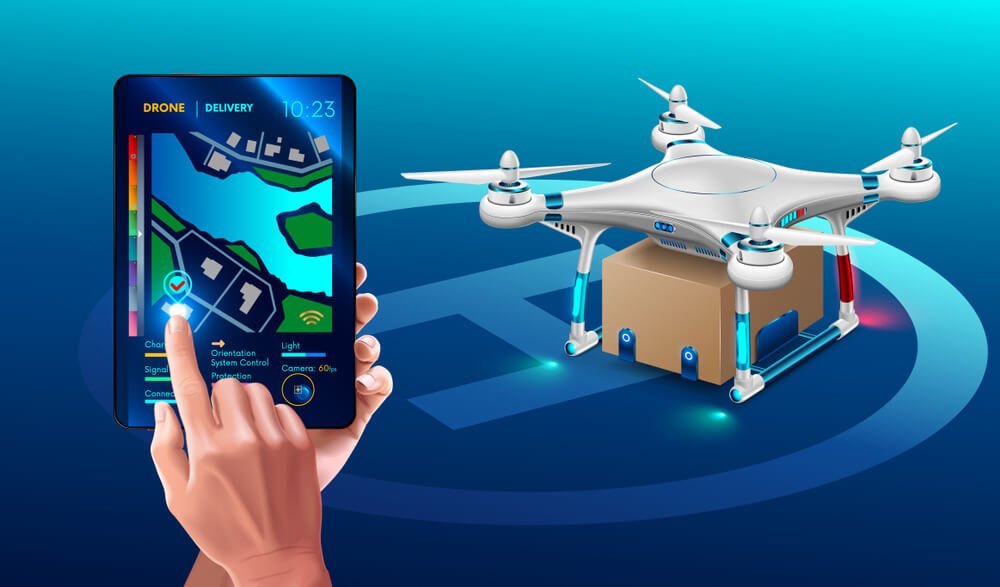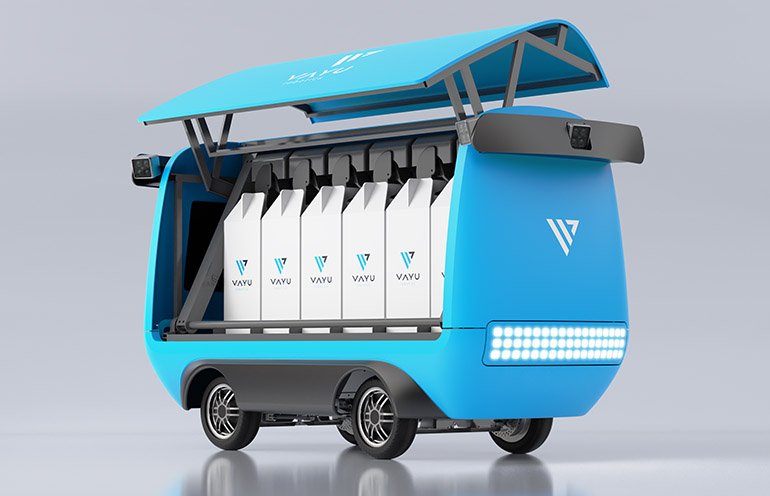
Enter a wave of innovations poised to revolutionize the last mile. Drones, robots, and autonomous vehicles are at the forefront of this technological shift, promising faster, more efficient, and sustainable delivery solutions. In this article, we’ll explore the cutting-edge technologies shaping the future of last-mile delivery, from flying drones and rolling robots to hybrid solutions that combine the best of both.
The Last-Mile Delivery Challenge

Before diving into the latest technologies, it’s important to understand why last-mile delivery poses such a challenge. This segment of the logistics chain is fraught with inefficiencies due to several factors:
- Urban Congestion: Delivering packages in densely populated areas leads to traffic delays, making timely deliveries difficult and costly.
- Customer Expectations: The rise of e-commerce has set the bar high for speed, with customers expecting same-day or even same-hour deliveries.
- High Costs: Last-mile delivery can account for up to 53% of total shipping costs, driven by labor, fuel, and vehicle maintenance.
- Environmental Concerns: Vehicle emissions from delivery trucks contribute to air pollution and the industry’s carbon footprint, putting pressure on companies to adopt greener solutions.
Enter Drones: The Aerial Solution
Drones, or unmanned aerial vehicles (UAVs), offer an exciting solution to many of the challenges inherent in last-mile delivery. These flying robots are designed to bypass road congestion, reduce delivery times, and cut costs.

Key Advantages of Drones:
- Speed and Efficiency: Drones can fly directly to a delivery destination, avoiding traffic and reducing delivery times significantly.
- Cost Reduction: Drones lower fuel and vehicle maintenance costs, as well as the need for human drivers.
- Accessibility: Drones can reach remote or hard-to-access areas where traditional vehicles might struggle.
- Environmental Impact: Electric-powered drones produce zero emissions, making them a cleaner alternative for last-mile logistics.
Companies like Amazon, Google, and UPS are already experimenting with drone deliveries through programs like Amazon Prime Air and Google’s Wing, demonstrating the feasibility of delivering small packages via drone. As battery life improves and regulatory frameworks evolve, drones are set to become a more integral part of last-mile delivery networks.
Ground Robots: The Rolling Revolution
While drones take to the skies, ground-based delivery robots are making waves on city streets. These small, autonomous robots are equipped with sensors and AI, enabling them to navigate sidewalks, avoid obstacles, and safely interact with pedestrians.

Benefits of Delivery Robots:
- Autonomy and Safety: With advanced sensors and AI, robots can autonomously navigate complex environments and avoid obstacles in real time.
- Cost Efficiency: Like drones, robots reduce dependency on labor and fuel, driving down last-mile delivery costs.
- Operational Continuity: Robots can operate in various weather conditions and times of day, ensuring consistent service.
Companies like Starship Technologies, Nuro, and Amazon Scout have deployed robots for last-mile deliveries, and the results have been promising. As AI and machine learning technologies advance, these robots will become even more efficient, optimizing routes and delivery times on the go.
Hybrid Solutions: Combining Drones and Robots
A hybrid approach that combines the strengths of both drones and ground robots is gaining traction in the logistics industry. In this model, drones handle long-distance deliveries, while ground robots manage the final leg to the customer’s doorstep. This system offers a flexible and efficient delivery process, leveraging the speed of drones and the precision of robots in navigating urban environments.
For instance, drones can drop off packages at designated points where robots take over, allowing for seamless delivery in congested or pedestrian-heavy areas.
Beyond Drones and Robots: Emerging Innovations
While drones and robots are leading the way, several other technologies are also shaping the future of last-mile delivery:
- Autonomous Vehicles: Self-driving delivery vans and trucks are being developed to automate larger portions of the delivery process. Companies like Tesla and Waymo are making strides in autonomous vehicle technology, promising more efficient and scalable delivery systems.
- Smart Lockers: Secure lockers installed in convenient locations allow customers to pick up packages at their convenience. These lockers can be integrated with drones and robots for a seamless delivery experience.
- Crowdsourced Delivery: Platforms like Uber Eats and Postmates leverage gig economy workers to provide flexible last-mile delivery. This model can complement autonomous technologies for even greater efficiency.
- AI and Big Data: Artificial intelligence and analytics tools are optimizing delivery routes, predicting demand, and improving overall network efficiency.
Challenges and Opportunities
While the potential of last-mile delivery technologies is immense, challenges remain:
- Regulatory Hurdles: Governments need to establish clear regulations around the use of drones, robots, and autonomous vehicles to ensure public safety and privacy.
- Technological Advancements: Further innovation is needed in areas like battery life, navigation, and payload capacity to make these technologies viable at scale.
- Societal Acceptance: Public trust and adoption of autonomous delivery technologies will be key. Demonstrating safety and reliability will help build consumer confidence in these innovations.
Conclusion
The future of last-mile delivery is undergoing a transformative shift. Drones, robots, and autonomous vehicles are revolutionizing logistics, offering faster, more efficient, and environmentally friendly solutions. As these technologies continue to evolve, they will redefine the logistics landscape, meeting the growing demands of modern consumers and creating a more efficient delivery ecosystem.